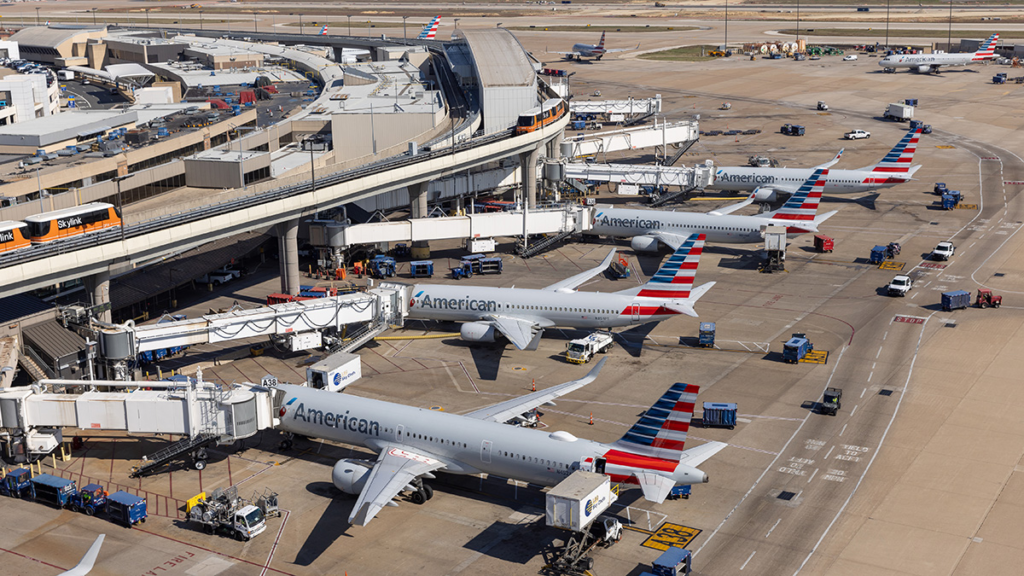DALLAS- American Airlines (AA) is one of the largest airlines in the world, operating tens of thousands of flights on numerous domestic and international routes from its hubs and bases. Its major hubs and bases are strategically located at the core of its operations to maximize connectivity and efficiency. Each hub plays a distinct role in AA’s vast network, which is influenced by geography, passenger demand, and routes.
This article covers American Airlines’ major hubs and bases, based on the number of monthly flights, total seats offered, and operational key metrics, including total available seat miles (ASMs) and average flight distances.
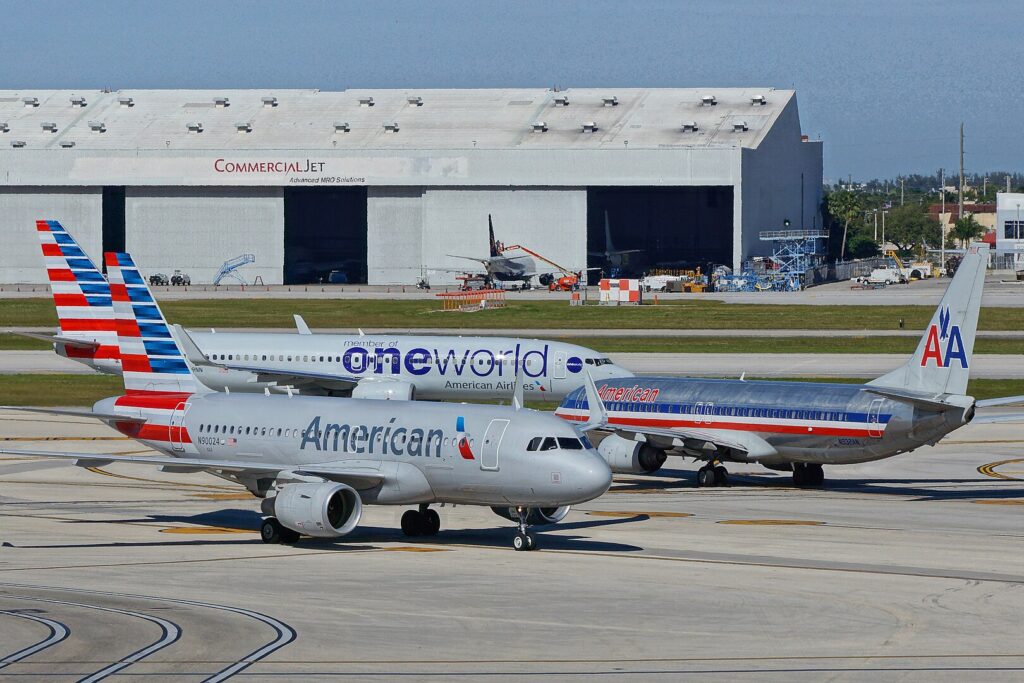
1. Dallas/Fort Worth International Airport (DFW)
- Monthly Flights: 15,944
- Total Seats Offered: 2,807,264
- Average Seats per Departure: 176.1
- Total ASMs: 3,431,965,365
- Average Flight Distance: 1,119 miles
Dallas/Fort Worth (DFW) is American Airlines’ largest hub both in terms of flight frequency and seat capacity. Handling close to 16,000 monthly flights, it offers nearly 2.8 million seats. DFW’s strategic central location allows American Airlines to efficiently connect passengers across its network.
With an average flight distance of 1,119 miles, DFW serves as a critical gateway for both short-haul and medium-haul flights. In other words, it’s the backbone of American’s domestic and global operations.
2. Charlotte Douglas International Airport (CLT)
- Monthly Flights: 11,030
- Total Seats Offered: 1,898,518
- Average Seats per Departure: 172.1
- Total ASMs: 1,742,923,575
- Average Flight Distance: 858 miles
At number two is, Charlotte Douglas International Airport (CLT), which is known for its high volume of connecting flights on the East Coast. Offering nearly 1.9 million seats in December, CLT plays a vital role in connecting domestic and regional flights, with an average flight distance of 858 miles.
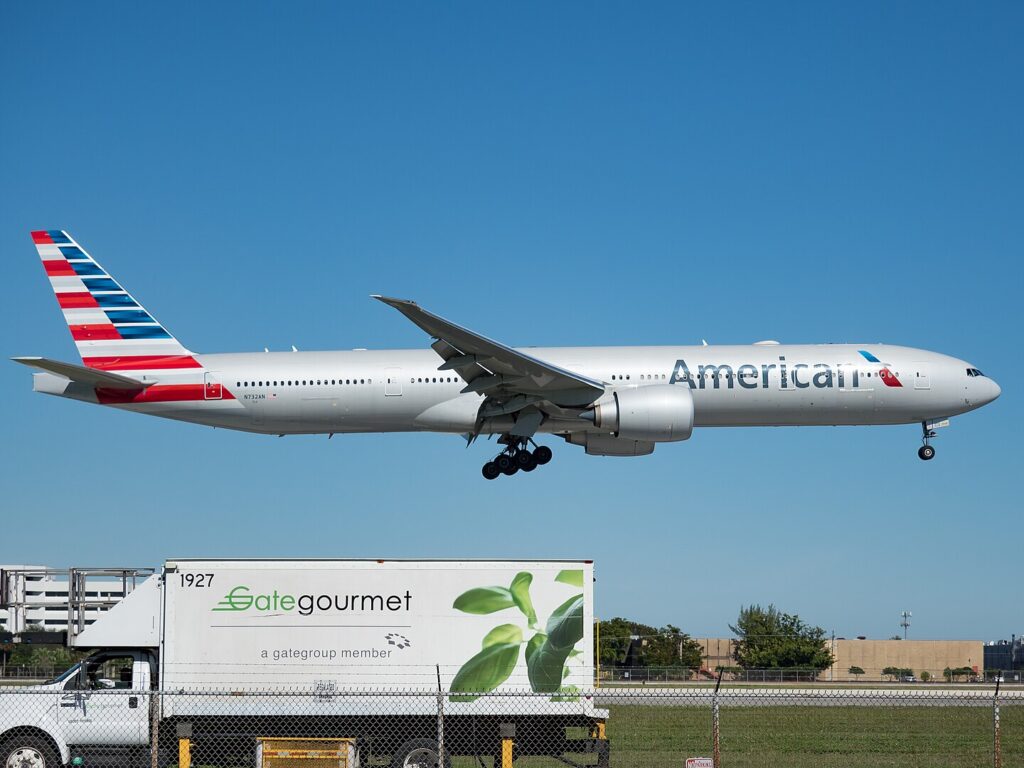
3. Miami International Airport (MIA)
- Monthly Flights: 9,192
- Total Seats Offered: 1,609,520
- Average Seats per Departure: 175.1
- Total ASMs: 2,158,924,665
- Average Flight Distance: 1,227 miles
Miami (MIA) serves as American Airlines’ primary hub for a large number of flights to Latin America and the Caribbean. With over 9,000 flights and more than 1.6 million monthly seats offered, it is one of the vital international gateways.
Moreover, this hub’s average flight distance of 1,227 miles highlights its focus on medium-haul and long-haul international routes.
4. Phoenix Sky Harbor International Airport (PHX)
- Monthly Flights: 4,853
- Total Seats Offered: 836,079
- Average Seats per Departure: 172.3
- Total ASMs: 1,043,844,114
- Average Flight Distance: 1,216 miles
Phoenix (PHX) supports American Airlines’ operations in the western United States. With over 4,800 flights in December, it handles a significant number of medium-haul flights.

5. Chicago O’Hare International Airport (ORD)
- Monthly Flights: 4,160
- Total Seats Offered: 710,225
- Average Seats per Departure: 170.7
- Total ASMs: 807,632,443
- Average Flight Distance: 1,101 miles
As a major hub in the Midwest, Chicago O’Hare (ORD) connects American Airlines’ passengers to destinations across the country. With over 4,000 flights in December, it handles both domestic and international flights in the region.
6. Philadelphia International Airport (PHL)
- Monthly Flights: 3,731
- Total Seats Offered: 672,529
- Average Seats per Departure: 180.3
- Total ASMs: 1,055,600,634
- Average Flight Distance: 1,437 miles
Philadelphia (PHL) is one of the key hubs for transatlantic flights, evident from its higher average flight distance of 1,437 miles. With nearly 3,800 flights in December, it remains a cornerstone for American Airlines’ transatlantic operations.

7. Los Angeles International Airport (LAX)
- Monthly Flights: 2,762
- Total Seats Offered: 500,314
- Average Seats per Departure: 181.1
- Total ASMs: 1,087,766,736
- Average Flight Distance: 2,067 miles
Los Angeles (LAX) is American Airlines’ primary hub for transpacific flights and long-haul domestic routes. The hub’s average flight distance of over 2,000 miles highlights the long-haul flights connecting Asia, Oceania, and domestic markets.
8. Washington National Airport (DCA)
- Monthly Flights: 2,023
- Total Seats Offered: 314,346
- Average Seats per Departure: 155.4
- Total ASMs: 289,511,840
- Average Flight Distance: 868 miles
Located in the heart of the nation’s capital, Washington National (DCA) is an important hub for government and business travelers. With a shorter average flight distance of 868 miles, DCA primarily caters to regional and East Coast flights.

9. John F. Kennedy International Airport (JFK)
- Monthly Flights: 1,829
- Total Seats Offered: 317,613
- Average Seats per Departure: 173.7
- Total ASMs: 802,512,878
- Average Flight Distance: 2,246 miles
JFK serves as one of American Airlines’ hubs for transatlantic and long-haul international flights. Offering nearly 2,000 flights in December, JFK’s operations focus on high-capacity routes to Europe and beyond, alongside some flights to the Middle East and India.
10. Orlando International Airport (MCO)
- Monthly Flights: 1,622
- Total Seats Offered: 292,757
- Average Seats per Departure: 180.5
- Total ASMs: 237,165,662
- Average Flight Distance: 796 miles
Orlando (MCO) is a key leisure travel hub for American Airlines. With an average flight distance of 796 miles, MCO primarily connects vacationers to popular domestic and short-haul international destinations.
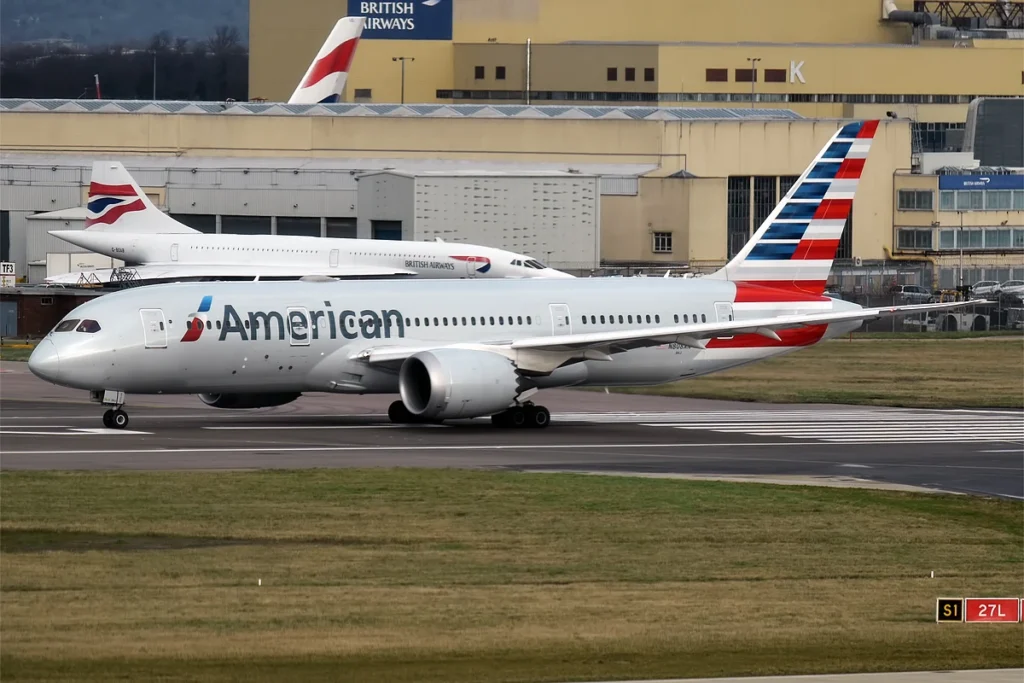
Honorable Mentions
In addition to the Top 10 primary hubs, American Airlines operates from several other significant bases across the United States. While these locations may not match the scale of the airline’s main hubs, they play an essential role in supporting the overall network by connecting regional markets and facilitating point-to-point travel.
Below is a summary of key statistics for these noteworthy bases:
| Hubs | Flights | Seats | Seats/Flight | ASMs | Average Miles |
| New York-La Guardia (LGA) | 1,471 | 240,502 | 163.5 | 233,696,134 | 954 |
| Boston (BOS) | 1,279 | 215,333 | 168.4 | 257,496,871 | 1,160 |
| Las Vegas (LAS) | 1,209 | 223,990 | 185.3 | 291,420,502 | 1,293 |
| Tampa (TPA) | 1,156 | 198,160 | 171.4 | 149,007,210 | 739 |
| Austin (AUS) | 1,098 | 179,710 | 163.7 | 140,696,198 | 795 |
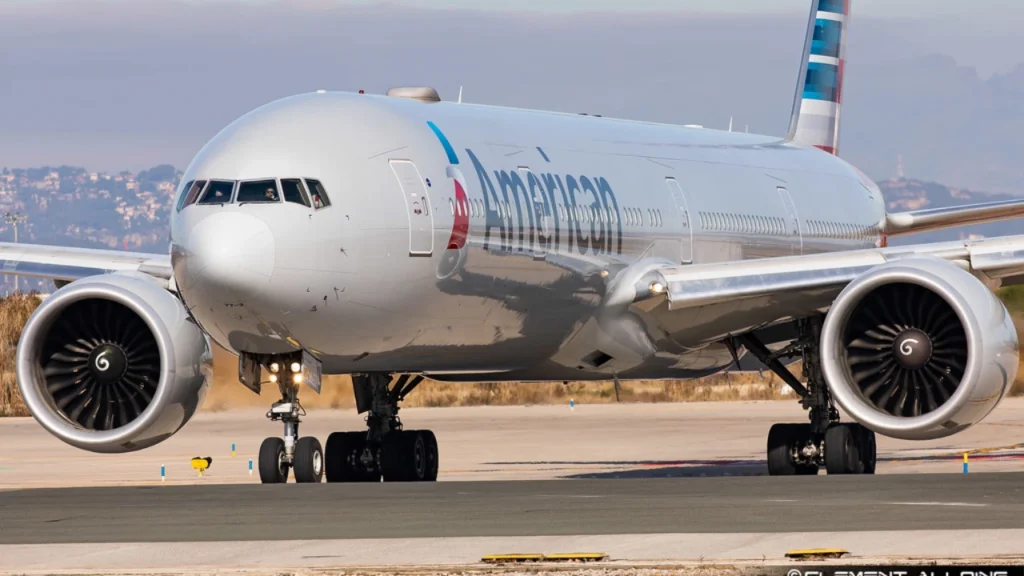
Bottom Line
American Airlines hubs are strategically located to optimize connectivity and enhance operational efficiency. From the massive operations at DFW to the international focus of hubs like JFK and MIA, each plays a unique role in the airline’s extensive network.
These hubs ensure that American Airlines remains a leading global carrier, connecting passengers to destinations across the United States and beyond.
All data sourced from Cirium.
Stay tuned with us. Further, follow us on social media for the latest updates.
Join us on Telegram Group for the Latest Aviation Updates. Subsequently, follow us on Google News

